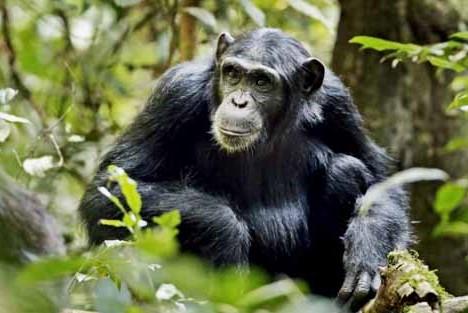“Chimp numbers are decreasing and this means that the number of locations you can go chimpanzee trekking in the wild is dwindling.”
What you should Expect while trekking for Chimpanzees
Introduction
Chimpanzee trekking in the wild is a truly unique, life-changing experience. Most of us enjoy seeing chimps in zoos and wildlife parks but there’s nothing quite like observing them in their natural habitat. If you’re looking to organize the trip of a lifetime and spot chimpanzees in the wild, this guide is packed with fascinating facts and helpful advice.
The location of chimps: Where can you go chimpanzee trekking?
Chimpanzees are an endangered species. The largest populations of wild chimpanzees can be found in Central African countries, including Gabon, Cameroon and the Democratic Republic of Congo. Chimps also live in other parts of Africa, including Nigeria, the Ivory Coast, Tanzania, Uganda, Rwanda, Senegal, Sierra Leone and Guinea-Bissau.
Chimp numbers are decreasing and this means that the number of locations you can go chimpanzee trekking in the wild is dwindling. The best places to view chimps and see how they behave and interact with each other in the wild during an organized trek include:
- Uganda
- Gabon
- Rwanda
- Tanzania
Although we associate chimpanzees with being sociable, fun-loving and inquisitive, it is essential to recognize the importance of planning wildlife experiences and encounters meticulously. It is not possible to visit one of the nations listed above and go out into the forests alone to observe chimp tribes. Organized tours are the only safe and sustainable way to see chimpanzees in their natural environment and to trek with chimps in a way that protects both you and them.
Examples of areas that are popular for chimp trekking include:
- Queen Elizabeth National Park, Kibale National Park and Budongo Forest Reserve, Uganda
- Mahale Mountains National Park and Gombe Stream National Park, Tanzania
- Nyungwe National Park and Gishwati, Rwanda
- Loango National Park, Gabon
What to expect from trekking with chimps
Trekking with chimps enables you to get up close and personal with troops of chimps in a safe way. From a distance, you will be able to view chimpanzees in small and large groups, monitor their behavior and see how they engage and interact in their natural habitat. Chimpanzees are fascinating creatures, which provide magical, unforgettable wildlife experiences. Chimps don’t sit still for long and they are acutely aware of their environment. They are constantly listening and watching and they undertake a wide range of activities on a daily basis. If you’re lucky, you’ll see them playing, communicating, cleaning and grooming each other, running and jumping and enjoying a cuddle with family members.
A chimp trekking experience aims to take advantage of technology and local knowledge and expertise to identify the best locations and find optimum conditions for tracking chimps and seeing them thrive in the wild. Tour groups work with local rangers and chimp experts to track chimps and provide the best opportunities to spot them and follow them as they go about their daily business.
Typical activities you can expect on a chimpanzee trekking adventure include game drives, treks and hikes, exploring stunning natural wonders and landscapes and learning about chimps and other animals you may be able to spot during the experience.
Facts about chimpanzees
Chimpanzees are intriguing animals, which have captivated and enthralled humans for centuries. If you’re keen to learn more before you go trekking with chimps in the wild, here are some compelling facts about chimpanzees:
- Chimps are our closest living relatives: chimpanzees share up to 98% of our DNA
- Wild chimps can only be found in Africa. There are chimpanzee populations in around 20 African countries.
- Chimps usually live in groups and forests and rainforests
- Most chimp tribes or troops consist of 20-120 individuals
- Chimpanzee families have complex structures, with clearly defined roles and a hierarchical structure
- The chimp diet comprises mostly fruit, vegetables and seeds but they also eat insects and are classed as omnivores
- Female chimps usually carry a single child and they rarely give birth more than once every five years
- Chimpanzees are heavily reliant on their mothers: young chimps cling to their mothers and other female members of the troop during the early years (up to five years) and they have very close bonds
- Chimps are extremely intelligent: they can learn languages, such as sign language and use tools, including twigs, sticks and rocks to find food and scratch their bodies
- The average life expectancy for wild chimps is around 33 years. In captivity, they can live much longer up to 50-60 years (source).
- Estimates suggest that there are currently between 150-000 and 300,000 chimpanzees living in the wild (source)
Why plan a chimp trekking experience?
Chimp trekking is worlds away from watching a family of chimps behind glass, bars or fences at a zoo or a wildlife park. Chimpanzees are beautiful, captivating, unique creatures. Trekking in the wild affords incredible opportunities to watch and learn and see how chimps behave and interact with other animals and their natural environment. If you are an animal lover, you are passionate about nature and conservation, or you’re fascinated by primates, nothing will prepare you for the experience of spotting and following chimpanzees in the wild.
If you’re interested in chimp trekking, why not get in touch today? A magical experience awaits!


0 Comments